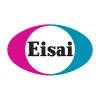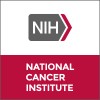
Oral LBH589 in Relapsed or Refractory Chronic Lymphocytic Leukemia (CLL) and Mantle Cell Lymphoma...
Non-Hodgkin's LymphomaThe purpose of the study is to find out the effects and the safety of an investigational study drug called LBH589 when given to people with relapsed or refractory chronic lymphocytic leukemia (CLL) or mantle cell lymphoma (MCL).

Efficacy and Safety of Decitabine as Epigenetic Priming With Induction Chemotherapy in Pediatric...
Pediatric Acute Myelogenous Leukemia (AML)The purpose of this study is to provide data on the activity of a standard daunorubicin, cytarabine, and etoposide (ADE) induction plus epigenetic priming with decitabine as assessed by standard measures of complete remission (CR), leukemia free survival (LFS) and overall survival (OS), as well as, on minimal residual disease (MRD). It will also provide necessary data on the safety and Pharmacokinetics (PK) of decitabine in pediatric patients that is currently unavailable.

Alvespimycin Hydrochloride in Treating Patients With Relapsed Chronic Lymphocytic Leukemia, Small...
B-cell Chronic Lymphocytic LeukemiaProlymphocytic Leukemia2 moreThis phase I trial is studying the side effects and the best dose of alvespimycin hydrochloride in treating patients with relapsed chronic lymphocytic leukemia (CLL), small lymphocytic lymphoma (SLL), or B-cell prolymphocytic leukemia (B-PLL). Drugs used in chemotherapy, such as alvespimycin hydrochloride, work in different ways to stop the growth of cancer cells, either by killing the cells or by stopping them from dividing.

Study of Nilotinib in Ph+ CML-CP Patients With Low Imatinib Trough Plasma Concentrations
CMLPhiladelphia Chromosome Positive (Ph+)1 moreThis study is to determine the number of European Leukemia Network (ELN)guideline defined treatment failure events from time of study entry in CML-CP patients with low imatinib trough concentrations treated with nilotinib.

IV Plerixafor With Mitoxantrone Etoposide and Cytarabine for Acute Myeloid Leukemia (AML)
LeukemiaMyeloid1 moreIn this phase I extension study, the investigators seek to test the safety of both higher doses of plerixafor as well as intravenous dosing to maximize inhibition of the target, CXCR4.

Safety Study of ON 013105 in Lymphoma and Acute Lymphoid Leukemia
LymphomaAcute Lymphocytic LeukemiaThis is an open-label, dose-escalation Phase 1 study of the investigational agent, ON 013105. In laboratory animal studies, ON 013105 has demonstrated anti-cancer activity. The purpose of this study is to determine the highest dose of ON 013105 that can be given safely in patients with relapsed/refractory Lymphoma or B-cell Acute Lymphocytic Leukemia (Philadelphia chromosome negative). Patients will receive weekly 2-hour IV infusions of ON 013105 at higher and higher doses until intolerable side effects are observed. It is important to know the highest safe dose so additional studies can be done.

Haploidentical Natural Killer (NK) Cells With Epratuzumab for Relapsed Acute Lymphoblastic Leukemia...
LeukemiaPediatric CancerThe goal of this clinical research study is to learn if transferring the donor's NK cells, in combination with an antibody called epratuzumab and low-dose interleukin (IL-2), into your body can be done safely. Researchers want to find out if the infused NK cells will survive after the infusion and if the NK cell infusion helps to destroy cancer cells in the recipient's body and possibly to help control the disease. Primary Objectives: · Evaluate the feasibility of collecting an adequate number of natural killer (NK) cells from a donor and evaluate the safety of a haploidentical donor-derived NK cell infusion, Epratuzumab, and low-dose interleukin-2 (IL-2). Secondary Objectives: Quantification and persistence of the infused donor NK cell in vivo; Quantification and persistence of cytokine levels; Assessment of NK cell immunophenotype and function; Correlate above with anti-tumor effect.

Bortezomib and Vorinostat in Treating Patients With High-Risk Myelodysplastic Syndrome or Acute...
LeukemiaMyelodysplastic SyndromeRATIONALE: Bortezomib and vorinostat may stop the growth of cancer cells by blocking some of the enzymes needed for cell growth. Giving bortezomib together with vorinostat may kill more cancer cells. PURPOSE: This phase II trial is studying how well giving bortezomib together with vorinostat works in treating patients with high-risk myelodysplastic syndrome or acute myelogenous leukemia.

Busulfan, Etoposide, and Intensity-Modulated Radiation Therapy Followed By Donor Stem Cell Transplant...
Adult Acute Myeloid Leukemia in RemissionAdult Acute Myeloid Leukemia With 11q23 (MLL) Abnormalities13 moreRATIONALE: Giving chemotherapy drugs, such as busulfan and etoposide, and intensity-modulated radiation therapy before a donor stem cell transplant helps stop the growth of cancer cells. It also helps stop the patient's immune system from rejecting the donor's stem cells. When the healthy stem cells from a donor are infused into the patient they may help the patient's bone marrow make stem cells, red blood cells, white blood cells, and platelets. Sometimes the transplanted cells from a donor can make an immune response against the body's normal cells. Giving intensity-modulated radiation therapy together with busulfan and etoposide before a transplant may stop this from happening. PURPOSE: This phase I/II trial is studying the side effects and best dose of intensity-modulated radiation therapy when given together with busulfan and etoposide followed by a donor stem cell transplant and to see how well it works in treating patients with advanced myeloid cancer.

Transplantation of Umbilical Cord Blood Following Chemotherapy for Blood Cancers
Acute Myeloid LeukemiaLeukemia8 moreThis study is to evaluate the safety of transplantation of two cord blood products, including toxicities in patients following high-dose, myeloablative chemotherapy for blood malignancies. It is also to determine if the use of two cord products results in an improvement in neutrophil engraftment.
